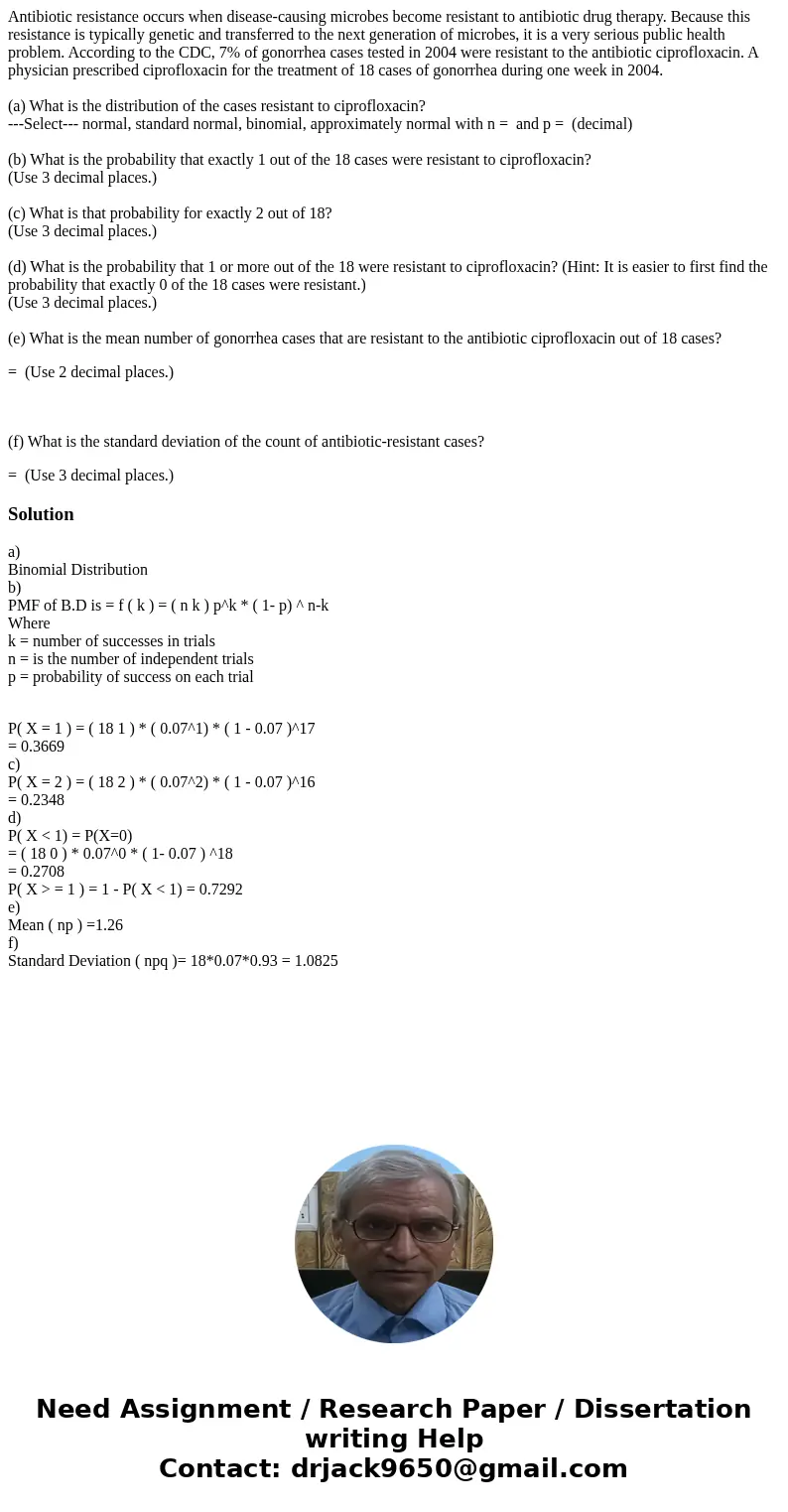Antibiotic resistance occurs when diseasecausing microbes be
Antibiotic resistance occurs when disease-causing microbes become resistant to antibiotic drug therapy. Because this resistance is typically genetic and transferred to the next generation of microbes, it is a very serious public health problem. According to the CDC, 7% of gonorrhea cases tested in 2004 were resistant to the antibiotic ciprofloxacin. A physician prescribed ciprofloxacin for the treatment of 18 cases of gonorrhea during one week in 2004.
(a) What is the distribution of the cases resistant to ciprofloxacin?
---Select--- normal, standard normal, binomial, approximately normal with n = and p = (decimal)
(b) What is the probability that exactly 1 out of the 18 cases were resistant to ciprofloxacin?
(Use 3 decimal places.)
(c) What is that probability for exactly 2 out of 18?
(Use 3 decimal places.)
(d) What is the probability that 1 or more out of the 18 were resistant to ciprofloxacin? (Hint: It is easier to first find the probability that exactly 0 of the 18 cases were resistant.)
(Use 3 decimal places.)
(e) What is the mean number of gonorrhea cases that are resistant to the antibiotic ciprofloxacin out of 18 cases?
= (Use 2 decimal places.)
(f) What is the standard deviation of the count of antibiotic-resistant cases?
= (Use 3 decimal places.)
Solution
a)
Binomial Distribution
b)
PMF of B.D is = f ( k ) = ( n k ) p^k * ( 1- p) ^ n-k
Where
k = number of successes in trials
n = is the number of independent trials
p = probability of success on each trial
P( X = 1 ) = ( 18 1 ) * ( 0.07^1) * ( 1 - 0.07 )^17
= 0.3669
c)
P( X = 2 ) = ( 18 2 ) * ( 0.07^2) * ( 1 - 0.07 )^16
= 0.2348
d)
P( X < 1) = P(X=0)
= ( 18 0 ) * 0.07^0 * ( 1- 0.07 ) ^18
= 0.2708
P( X > = 1 ) = 1 - P( X < 1) = 0.7292
e)
Mean ( np ) =1.26
f)
Standard Deviation ( npq )= 18*0.07*0.93 = 1.0825

 Homework Sourse
Homework Sourse